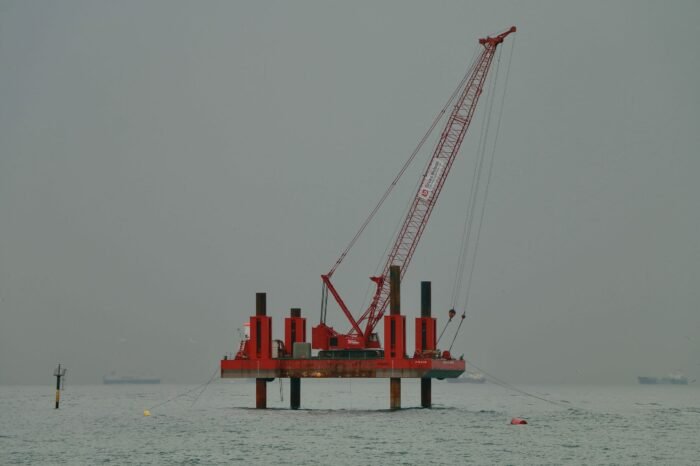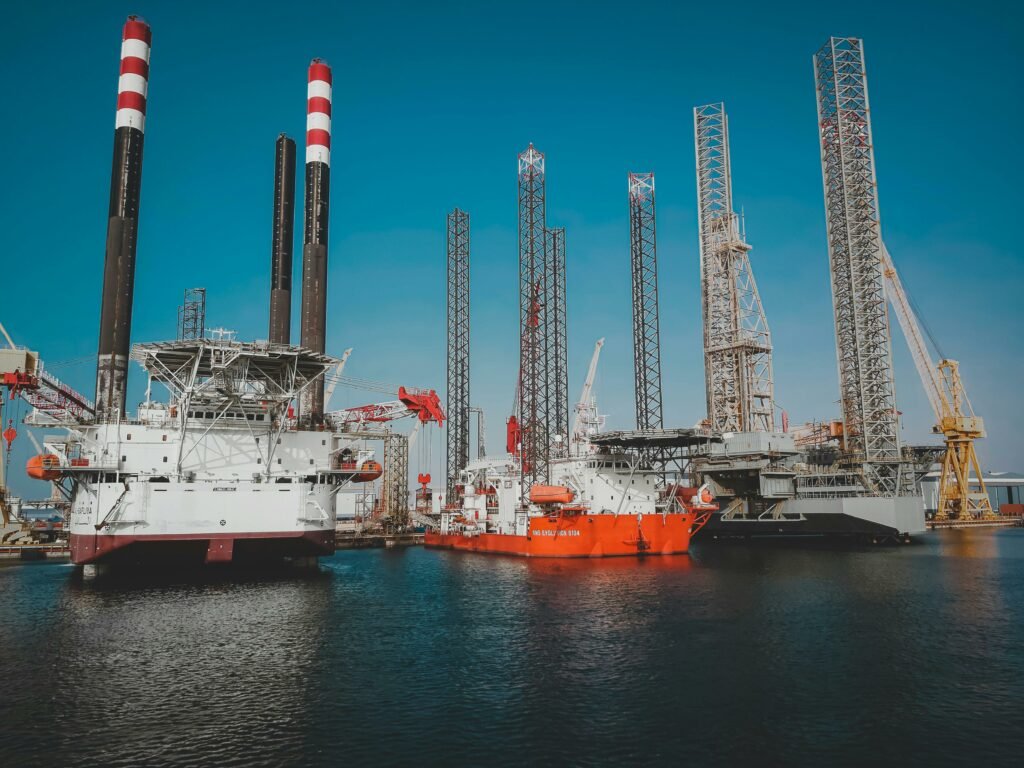Are you ready to dive into the fascinating world of rig decommissioning? Whether you’re a seasoned industry professional or just someone curious about the intricacies of offshore operations, this comprehensive guide is here to shed light on one of the most critical aspects of oil and gas exploration.
In this era of sustainable energy and environmental consciousness, rig decommissioning has become an essential step towards responsible resource management. It involves safely closing down drilling platforms once they have fulfilled their purpose, ensuring minimal impact on marine ecosystems while maximizing asset recovery.
But what does it take to carry out a successful decommissioning? From regulatory requirements to strategic planning, from safety measures to stakeholder engagement – every aspect plays a crucial role in this complex process. So grab your hardhat, put on your safety goggles, and let’s embark on this enlightening journey through rig decommissioning!
Statistics on Rig Decommissioning: A Comprehensive Guide
Here are some statistics:
- The global offshore decommissioning market was valued at USD 5.25 billion in 2021 and is expected to grow at a CAGR of 7.6% during the forecast period.
- The offshore decommissioning market is estimated to grow at a CAGR of 7.32% between 2022 and 2027.
- The global offshore decommissioning market size was valued at $5.2 billion in 2021 and is expected to grow at a compound annual growth rate (CAGR) of 7.4% from 2021 to 2027.
- The UK government recognizes the importance of offshore decommissioning and the UK has the most advanced offshore decommissioning sector, making it poised to become the worldwide center for decommissioning.
- The oil and gas extraction industry has an elevated occupational fatality rate that is consistently among the highest of any U.S. industry. Fatal injuries in activities related to offshore oil and gas operations have been reported.
Rig Decommissioning: A Comprehensive Guide
1. Rig Decommissioning: Understanding the Process and Its Significance
Rig decommissioning is a multifaceted process that involves carefully dismantling and closing down offshore drilling platforms. After years of extracting precious resources from beneath the ocean floor, it’s crucial to ensure that these structures are properly retired in an environmentally responsible manner.
The first step in rig decommissioning is thorough planning and assessment. This includes evaluating the structural integrity of the platform, as well as determining the most efficient approach for dismantling and removing equipment. Rig operators need to consider factors such as weather conditions, access routes for heavy machinery, and potential environmental impacts.
Once all necessary permits and regulatory approvals are obtained, the actual decommissioning work begins. This often involves bringing in specialized teams equipped with cutting-edge technology to dismantle and remove various components of the rig safely. From drilling decks to pipelines and support structures – every piece needs to be carefully disassembled or removed while minimizing risks.
One critical aspect of rig decommissioning is managing any potential hazards posed by residual hydrocarbons or hazardous materials on board. Proper cleaning procedures must be followed to prevent contamination of surrounding waters during equipment removal activities.
Another significant consideration during this process is marine life protection. Rig operators must take measures to safeguard vulnerable ecosystems by employing techniques like artificial reef creation or relocation of marine habitats before demolishing underwater infrastructure.
Rig decommissioning plays a vital role in ensuring sustainable resource management practices within the oil and gas industry. By responsibly retiring these structures once their productive life has ended, we can preserve our oceans’ delicate balance while maximizing value through asset recovery. Stay tuned as we delve deeper into regulatory considerations, safety measures, waste management strategies, stakeholder communication throughout this comprehensive guide on rig decommissioning!
2. Regulatory Considerations: Navigating Legal Requirements for Rig Decommissioning
When it comes to rig decommissioning, navigating the legal requirements is a crucial aspect that cannot be overlooked. The process of decommissioning rigs involves multiple regulatory agencies and compliance with various laws and regulations. Understanding these requirements is essential to ensure a smooth and compliant decommissioning process:
- One of the primary considerations in rig decommissioning is obtaining the necessary permits from regulatory bodies such as the Bureau of Safety and Environmental Enforcement (BSEE) or the relevant government agency in your jurisdiction. These permits outline specific guidelines for dismantling, removal, and disposal activities during rig closure.
- Additionally, environmental impact assessments are often required to evaluate potential risks associated with decommissioning activities. These assessments help identify any potential harm to marine ecosystems, wildlife habitats, or water quality. Adhering to these assessments ensures that appropriate measures are taken to minimize environmental impacts during rig decommissioning.
- It’s also important to consider worker safety during the entire decommissioning process. Compliance with occupational health and safety standards set by agencies like OSHA (Occupational Safety and Health Administration) is vital to protect workers involved in rig closure operations.
- Furthermore, financial assurance plays a significant role in meeting regulatory obligations for rig decommissioning. Many jurisdictions require operators to demonstrate their ability to cover all costs related to removing facilities, plugging wells, and restoring affected areas after cessation of production.
- To successfully navigate these complex legal requirements for rig decommissioning, it’s advisable to work closely with experienced professionals who specialize in this field. They can provide valuable guidance on understanding local regulations, ensuring compliance throughout each stage of the process while minimizing any potential delays or penalties.
Rig owners must prioritize adherence to regulatory considerations when undertaking decommissioning projects. By navigating the complex web of legal requirements and working closely with experts in the field, they can safeguard their operations and maintain compliance.
3. Safety Measures and Environmental Impact: Minimizing Risks during Decommissioning
Ensuring safety during rig decommissioning is of paramount importance. The process involves various tasks, such as removing equipment, disconnecting pipelines, and plugging wells. These activities can potentially pose risks to workers and the environment if not properly managed.
To minimize these risks, rigorous safety protocols must be implemented throughout the decommissioning process. This includes conducting thorough risk assessments to identify potential hazards and developing comprehensive emergency response plans. Adequate training should also be provided to all personnel involved in the project, ensuring they are equipped with the necessary knowledge and skills to carry out their tasks safely.
Environmental impact must also be carefully considered during rig decommissioning. It is crucial to minimize any harm caused by operations such as cutting or dismantling structures underwater. Special care should be taken when dealing with hazardous materials or substances that may have accumulated over time on the rig.
By adhering to strict safety measures and implementing environmentally conscious practices, operators can mitigate risks associated with rig decommissioning while minimizing its impact on ecosystems. Regular monitoring and compliance checks are essential to ensure that all standards are being upheld throughout the entire process.
Remember, prioritizing safety and environmental protection ensures a responsible approach towards rig closure while safeguarding both human lives and our precious natural resources for future generations.
4. Decommissioning Strategies: Approaches for Efficient and Responsible Rig Closure
When it comes to rig decommissioning, having a well-thought-out strategy is essential. It not only ensures the efficient closure of rigs but also promotes responsible practices that prioritize safety and environmental protection. Let’s explore some approaches that can help achieve these goals:
- One common approach is called complete removal. This involves fully dismantling and removing all structures from the site. While it may be more time-consuming and costly, it offers a clean slate for future use of the area.
- On the other hand, partial removal is an option where certain parts of the rig are left in place while others are removed. This strategy aims to strike a balance between cost-effectiveness and minimizing potential environmental impact.
- Another approach is repurposing or reefing the rig structures as artificial reefs. By transforming them into marine habitats, this method provides benefits to marine life while reducing costs associated with complete removal.
- Additionally, rigs can be converted for alternative uses such as renewable energy platforms or research facilities. Repurposing allows for sustainable utilization of existing infrastructure rather than starting from scratch.
- Moreover, there’s another technique called in-place decommissioning which involves leaving the structure intact on-site but making it safe by plugging wells and securing any hazardous materials.
- Each decommissioning strategy has its own advantages depending on factors like location, costs involved, regulatory requirements, and stakeholder considerations. Therefore, careful evaluation should be made before selecting an appropriate approach for each specific scenario.
By adopting efficient and responsible decommissioning strategies tailored to individual circumstances, we can ensure a smooth transition towards repurposed rigs or restored environments while safeguarding our oceans’ health.
5. Asset Recovery and Waste Management: Maximizing Value from Decommissioned Rigs
When it comes to rig decommissioning, one crucial aspect that cannot be overlooked is asset recovery and waste management. The process of dismantling and removing a rig involves not only disposing of the waste generated but also identifying any valuable assets that can be salvaged or repurposed.
During the decommissioning process, various materials such as steel, equipment, and machinery are recovered from the rig. These items can hold significant value if properly managed. For example, steel components can be recycled and used in other industries, reducing the need for new production and minimizing environmental impact.
To maximize value from decommissioned rigs, thorough planning is essential. Rig owners must carefully assess each component to determine its potential reuse or resale value. This requires expertise in evaluating market demand for specific assets and understanding current industry trends.
Waste management also plays a critical role in responsible rig closure. Proper disposal methods must be employed for hazardous materials such as chemicals or drilling fluids. Recycling options should be explored whenever possible to minimize waste sent to landfills.
Collaboration with specialized contractors experienced in asset recovery is key during this phase of decommissioning. Their knowledge and network within industries that may benefit from repurposing these assets can help ensure maximum returns on investments made during a rig’s operational life.
By adopting innovative approaches to asset recovery and waste management during rig decommissioning, stakeholders can not only recoup some financial investment but also contribute positively towards sustainability goals by reducing their carbon footprint.
Asset recovery and waste management are integral parts of the overall rig decommissioning process. By maximizing value through proper assessment of salvageable assets while implementing sustainable waste disposal practices, companies demonstrate their commitment to responsible resource utilization even at the end of a rig’s productive life cycle.
6. Financial Planning: Budgeting and Cost Management for Rig Decommissioning
When it comes to rig decommissioning, financial planning plays a crucial role in ensuring a smooth and efficient process. Proper budgeting and cost management are essential to minimize expenses while still meeting regulatory requirements:
- One of the first steps in financial planning is conducting a comprehensive assessment of the rig’s condition. This evaluation helps determine the scope of work needed for decommissioning and provides an estimate of associated costs. Factors such as equipment removal, platform dismantling, waste disposal, environmental remediation, and personnel expenses must all be considered.
- Developing a detailed budget is vital to keep track of expenses throughout the entire decommissioning project. It involves identifying different cost categories, estimating costs for each category, and monitoring actual expenditures against projected budgets. By keeping a close eye on spending, companies can identify potential areas where cost-saving measures can be implemented without compromising safety or environmental compliance.
- Cost management during rig decommissioning also requires careful consideration of asset recovery opportunities. Some components and materials from the rig may still hold value that can offset certain costs. For example, salvageable equipment or metal scraps could potentially be sold or repurposed rather than being treated as waste.
- Additionally, engaging with experienced contractors who specialize in rig decommissioning can help ensure effective cost management strategies are employed throughout the project. These professionals have extensive knowledge about industry best practices and understand how to optimize resources while maintaining high standards of safety.
- Financial planning should also account for any unforeseen circumstances or changes that may arise during the decommissioning process. Having contingency funds set aside allows flexibility to address unexpected challenges without causing delays or exceeding initial budgets.
Proper financial planning goes hand in hand with successful rig decommissioning projects by providing organizations with a roadmap for effective budget allocation and cost control measures. With attention given to every detail related to finances through meticulous planning and ongoing monitoring, companies can navigate the decommissioning process with confidence and achieve their goals in a cost-effective manner.
7. Stakeholder Communication: Transparent Engagement throughout Decommissioning
Effective stakeholder communication is crucial during the process of rig decommissioning. It is essential to engage and involve all relevant parties, including local communities, regulatory agencies, environmental groups, and industry stakeholders. By prioritizing transparent engagement, potential conflicts can be minimized and the overall decommissioning process can proceed smoothly:
- One key aspect of stakeholder communication is providing clear and accurate information about the decommissioning project. This includes sharing details about the timeline, procedures involved, safety measures in place, and any potential environmental impact. Openly addressing concerns or questions from stakeholders helps build trust and ensures that everyone has a comprehensive understanding of the project.
- Regular updates should be provided throughout each phase of the decommissioning process. This allows stakeholders to stay informed about progress made, challenges encountered, and any necessary adjustments to plans or schedules. Timely communication also enables stakeholders to provide input or raise concerns that may have been overlooked.
- Engaging with stakeholders through various channels such as public meetings, workshops, newsletters or online platforms fosters a sense of inclusivity. Encouraging two-way communication by actively listening to feedback shows a commitment towards incorporating different perspectives into decision-making processes.
- Additionally, it is important to consider cultural sensitivities and tailor engagement strategies accordingly when dealing with diverse stakeholder groups. Understanding their specific needs helps ensure effective dialogue while fostering meaningful relationships built on respect and understanding.
By maintaining open lines of communication with all relevant parties throughout the entire rig decommissioning process; trust can be established which ultimately leads to successful outcomes for all involved.
Conclusion
In this comprehensive guide, we have explored the intricacies of rig decommissioning and highlighted its significance in the oil and gas industry. From understanding the process to navigating regulatory requirements, implementing safety measures to managing environmental impact, adopting efficient decommissioning strategies to maximizing asset recovery and waste management – each step is crucial for a successful closure.
Rig decommissioning is not just about dismantling structures; it involves careful planning, coordination, and collaboration among various stakeholders. By adhering to legal obligations and engaging transparently with regulators, local communities, and other vested parties throughout the process, companies can ensure a responsible approach towards decommissioning. Financial planning plays a vital role in rig decommissioning as well. Budget allocation and cost management are essential factors that need thorough consideration right from the initial stages of planning until completion. By effectively managing expenses while ensuring compliance with regulations, companies can mitigate financial risks associated with rig closures.
Effective stakeholder communication forms the bedrock of successful rig decommissioning projects. Engaging openly with all parties involved fosters trust, transparency, and cooperation – leading to smoother operations during every phase of closure. As technological advancements continue to shape the future of offshore energy production techniques such as floating wind farms or subsea carbon capture storage facilities may replace retired rigs at some locations. However, routine maintenance, safe disposal practices will always remain paramount when it comes to preserving our environment for generations ahead.
By following this comprehensive guide on rig decommissioning processes you will be better prepared for challenges that come along this journey . Rig Decommissioning requires time , effort but also skilled professionals who are capable enough so make sure you hire them wisely .
Remember – responsible rig closure ensures protection for both people working in these environments as well as marine ecosystems surrounding them . It’s time we embrace sustainable solutions that minimize environmental impact without compromising on safety standards!
So whether you’re an operator or contractor involved in rig decommissioning or simply interested in understanding the process, this guide provides valuable











